There are many software application that simply
will not work, or work well, on Windows 7 that work
perfectly well on Windows XP. Although Windows 7 has
backward compatibility with many applications it can
be extremely annoying when you install an
application that works perfectly well on Windows XP
only to find that on the new operating system it
refuses to function correctly.
With this in mind Microsoft has developed Windows
XP Mode specifically for Windows 7. Windows XP Mode
is a virtual environment which allows you to run
older software in an XP environment but, at the same
time, have it appear to be running within Windows 7.
Windows XP Mode comes in three sections. The
first is Windows XP Mode itself which comprises a
copy of Windows XP Professional complete with a
pre-activated OEM (Original Equipment manufacturer)
product key. The second part comprises Microsoft's
Virtual PC application, and the third part consists
of an optional update for computers that do not have
the necessary Virtual Technology hardware in the
form of either an Intel processor which supports VT
or an AMD-V processor.
To be able to use Windows XP Mode you will
require the following components:
- Click the link above to access the Microsoft
Virtual PC download site.
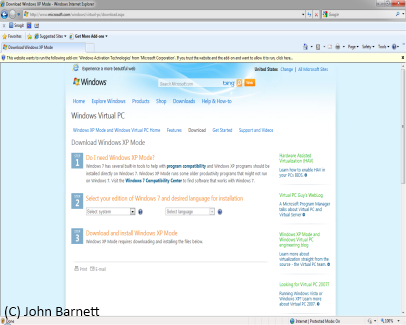
Fig: 44-1 Windows Virtual PC
Download Page Web Site
- A yellow band will appear at the top of the
web page. Click on the click here link to
download and run the Windows Activation
Technologies add on to allow you to start the
download.
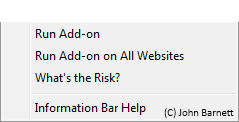
Fig: 44-2 The Run Add-on drop
down menu.
- Click the Run button to install the active X
control.
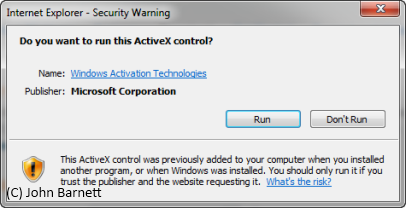
Fig: 44-3 Windows Activation
Technologies Active X Control
- Once the Run Add-on has been installed you
need to select the edition of Windows 7 that you
are using from the Step 2 section of the web
page.
- Remember you can only use Windows XP Mode on
Windows 7 Professional, Enterprise or Ultimate.
If you select Premium, for example, the
following message will appear: You are not
eligible to download Windows XP Mode. You must
have Windows 7 Professional, Enterprise or
Ultimate to run Windows XP Mode. To upgrade
visit
Windows 7 Anytime Upgrade .
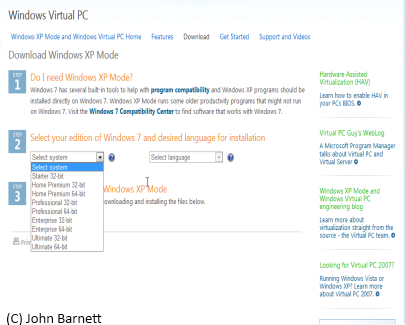
Fig: 44-4 Select the Windows
7 operating system version you are using.
- After you have selected your Windows 7
version you next need to select your operating
system language.
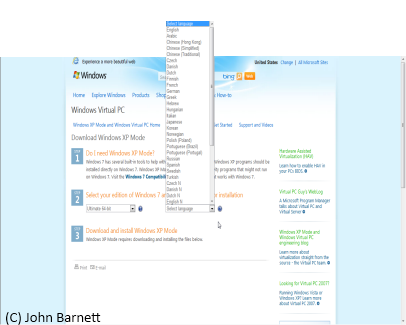
Fig: 44-5 Select your
operating system language from the drop down
menu list.
- After you have selected your language a set
of download buttons will appear in the Step 3
section of the web page. You will not need to
download the Virtual PC Update unless your PCs
hardware does not possess the required Virtual
Technology requirements.
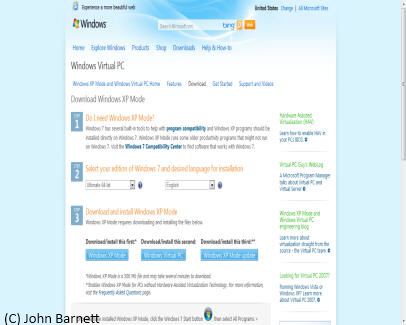
Fig: 44-6 Click the download
options in sequence to download all of the
relevant applications.
-
Installing Windows XP Mode
- Next you need to install Windows XP Mode.
Click on the XP Mode download and then, when the
window below appears, Click the Run button.
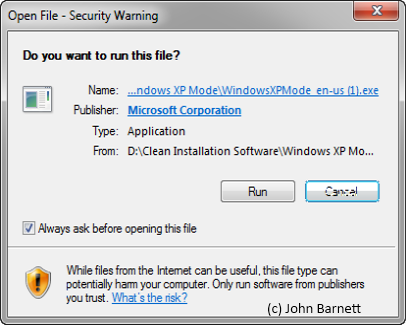
Fig: 44-7 Click Run to start
the installation.
- On the Welcome to setup for Windows XP Mode,
Click the Next button.
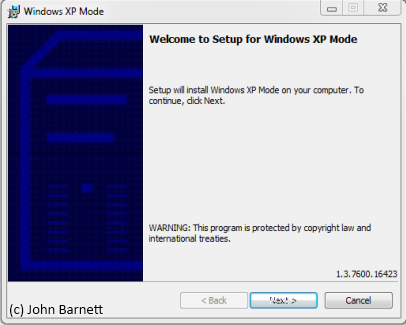
Fig: 44-8 To install Windows
XP Mode, Click the Next button.
- Specify the location for the Windows XP Mode
files. The default is C:\Program Files\Windows
XP Mode. Click the Next button to continue.
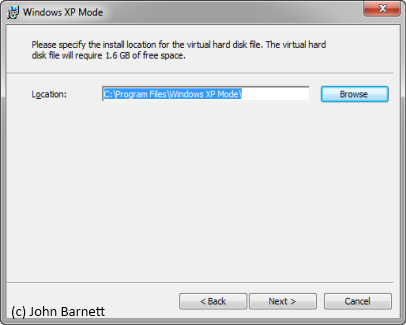
Fig: 44-9 Default location
for the Windows XP Mode files.
- Windows XP Mode will now start to install.
You can check it's status via the progress bar.
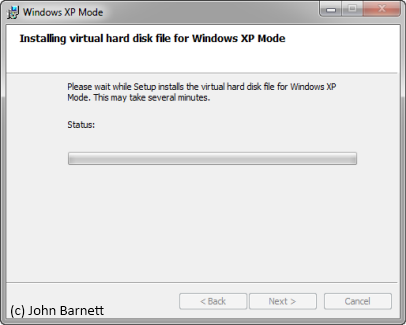
Fig: 44-10 Installation
progress window.
- Another license agreement window will now
appear. To continue you need to accept the
license agreement by placing a check mark in the
box next to the I accept the license terms
option and then Click the Next button.
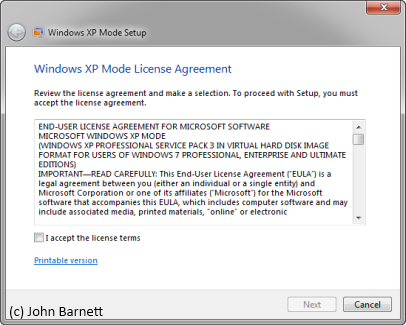
Fig: 44-11 Accept the license
agreement and then Click Next.
- Select the installation folder location and
type in a suitable password. Confirm the
password before Clicking the Next button.
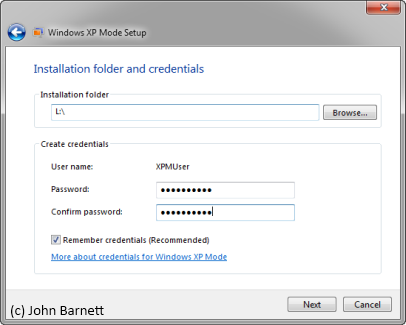
Fig: 44-12 Installation
folder and credential window.
- Select the automatic updates option by
clicking the radio button next to the Help
protect my computer by turning on Automatic
Updates now (recommended) option and then Click
the Next button.
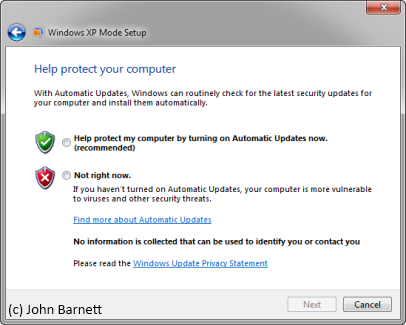
Fig: 44-13 Turn on Automatic
Updates to protect your installation.
- You are now ready to start the actual setup.
Click the Start Setup button to continue.
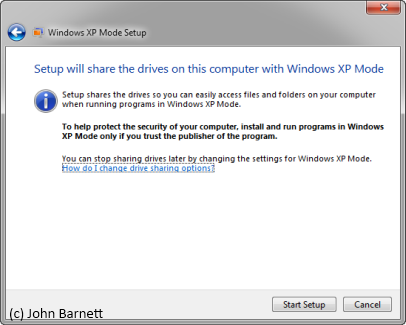
Fig: 44-14 Click the Start
Setup button.
- The welcome screen will now appear. The
progress bar indicates how setup is progressing.
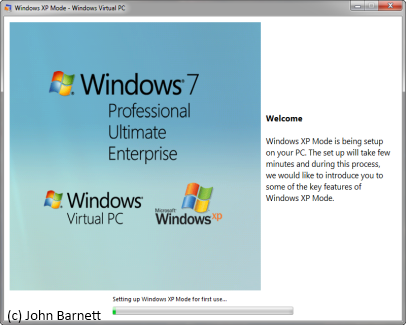
Fig: 44-15 Welcome Screen.
- As setup progresses further screens appear
informing you about the product.
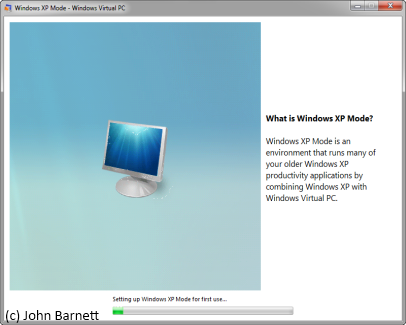
Fig: 44-16 What is Windows XP
Mode?
- Each window explains more about what Windows
XP Mode does.
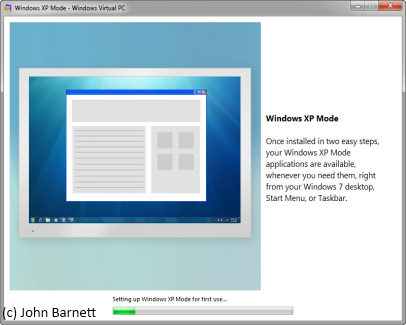
Fig: 44-17 Windows XP Mode
progress
- When you see the Installation Step 1 window
you are almost finished.
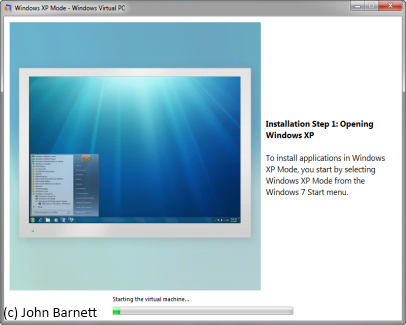
Fig: 44-18 Installation step
1 window
- Having now almost completed setup, Windows
XP starts loading personal settings.
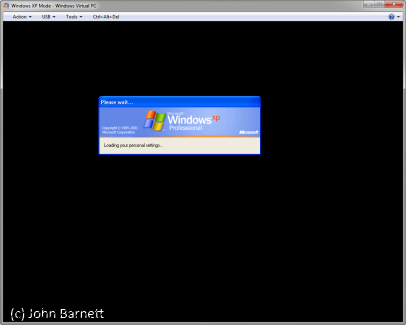
Fig: 44-19 Loading personal
settings window.
- Finally the Windows XP desktop appears
indicating that setup has completed.
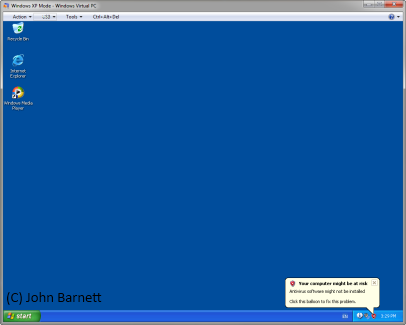
Fig: 44-20 The Windows XP
Desktop.
Installing Windows Virtual PC
- Once you have installed Windows XP Mode you
next need to install Windows Virtual PC. To do
this Click on the Windows Virtual PC setup file.
The update installer will first search your
computer.
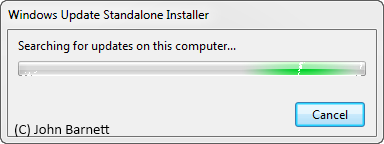
Fig: 44-21 Standalone
Installer searching for components.
- When the installer asks you if you want to
install the following software update, Click the
Yes button.
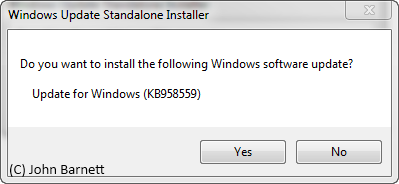
Fig: 44-22 Click the Yes
button to start the installation.
- The License agreement will now appear. To
accept the license agreement, Press the I Accept
button.
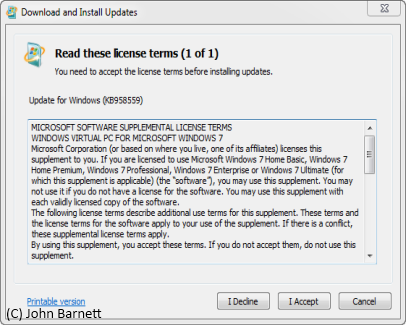
Fig: 44-23 Licence terms.
- Windows XP Mode will now begin to install.
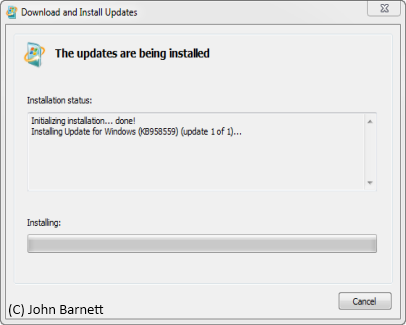
Fig: 44-24 Installation
progress bar.
- After the installation has completed, Click
the Restart Now button to restart your PC.
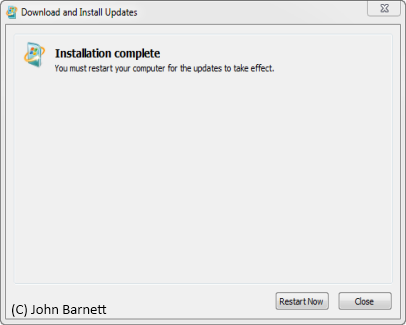
Fig: 44-25 Installation
completed.
- Remember that, if your processor does not
support hardware assisted virtualization
technology, you will now need to install the
Windows XP Mode update you previously downloaded
from the Windows XP Mode website.
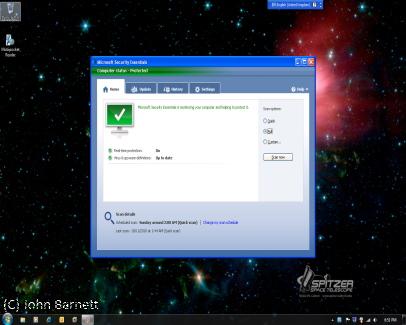
Fig: 44-26 Microsoft Security
Essentials opened in XP Mode from the Windows 7
start menu.